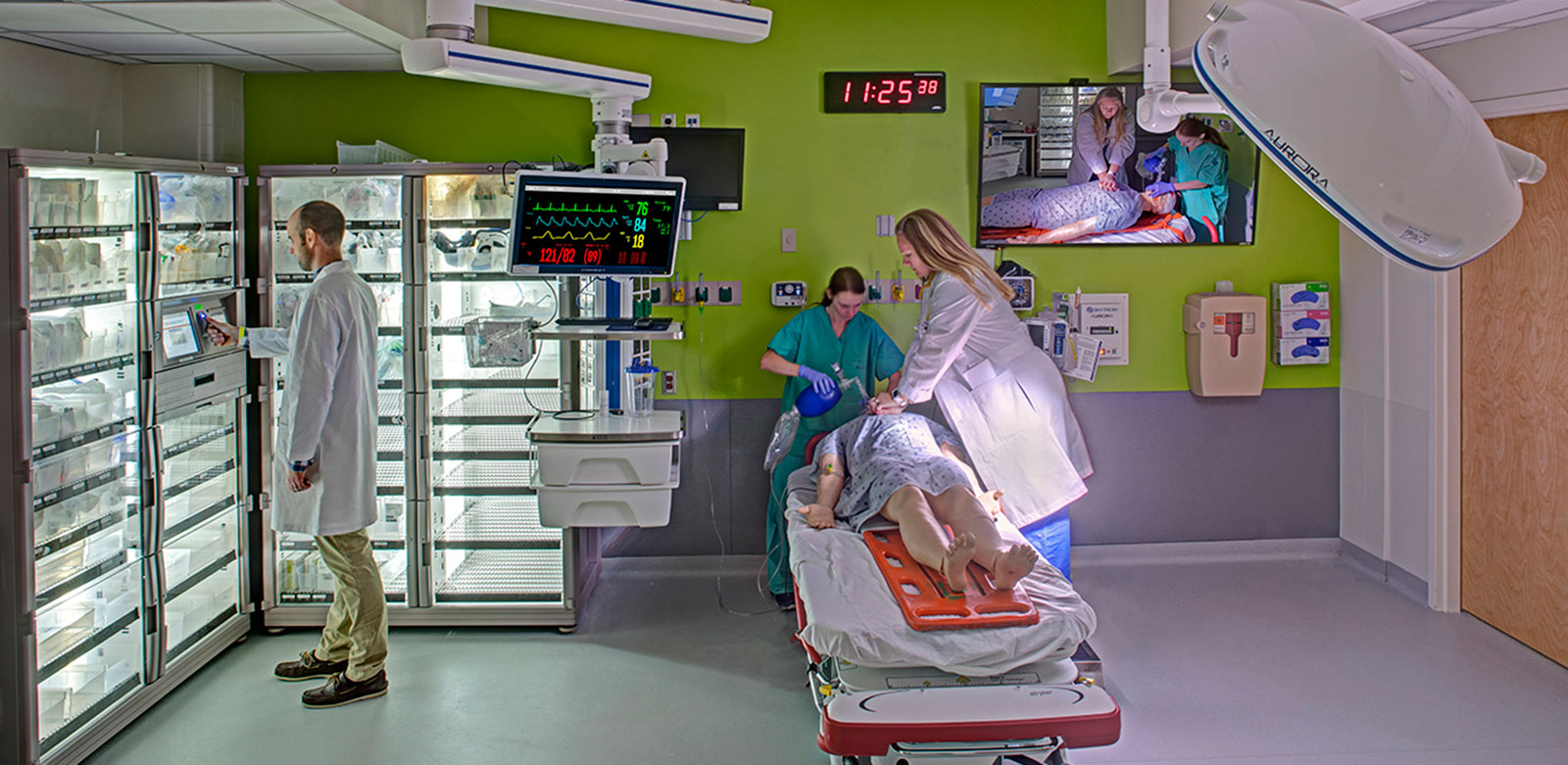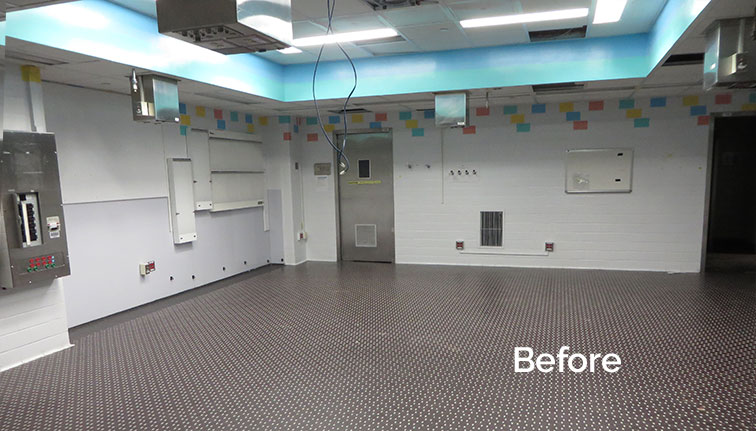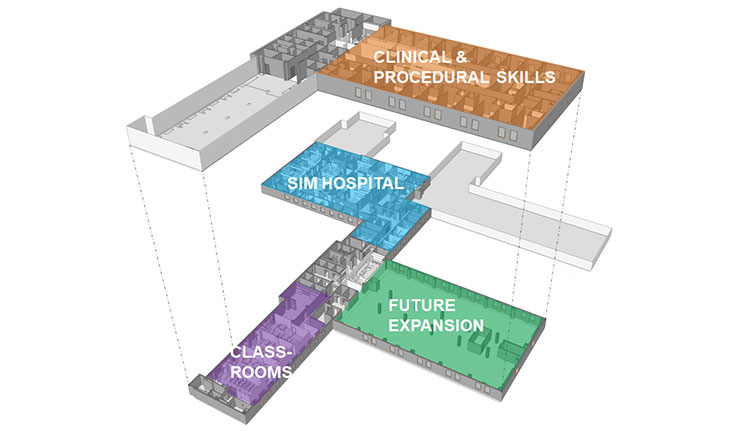
The Simulation Center renovation is the first phase of the 13-story, 370,000-SF CMSC facility re-purposing at the heart of Johns Hopkins Hospital. The Simulation Center incorporates a clinical skills suite, simulated hospital, flexible conference space and the Resuscitation Center highlighting Johns Hopkins’ history of innovation and leadership in this area. Sim rooms are sized to accommodate post-procedure debriefings with whiteboards and technology that allow students and staff to link their screens to a main screen for universal viewing. Debrief rooms offer direct observation into sim rooms. The centralized tech support area maximizes operational efficiency with a layout that supports simultaneous events but also enables a single technical staff member to support multiple rooms.
![[logo]](https://slamcoll.com/wp-content/themes/sub151-SLAM/resources/images/logo-only.png) at-a-glance
at-a-glanceJohns Hopkins Hospital was facing a dilemma in the form of what to do with its vacated Children’s Medical and Surgical Center (CMSC) Building, located in the heart of the bustling medical center’s campus. The 13-story, 370,000 SF facility needed new infrastructure, a new façade, and a totally revamped building program following the decommissioning of the facility since the new Children’s Hospital opened. In addition, the current Simulation Center at Johns Hopkins University was undersized and also in need of significant upgrades in order to maintain the prestigious standing it had earned.

Pediatric OR suites were renovated into a Continuum of Care Simulation Hospital (including Trauma Room, ICU, Labor/Delivery Room, Two Inpatient Rooms and Two ORs) without moving any of the existing walls.

The Center incorporates a clinical skills suite, a simulated hospital, a flexible conference space, sophisticated work environment, touchdown and visiting office space, and a resuscitation center.
The scope of SLAM’s work includes assessment of the existing building infrastructure, fit analysis to identify highest and best use, and cost/benefit analysis exploring a range of solutions from total renovation to demolition. The phased renovation included the creation of a 48,000 SF Simulation Center on two of the CMSC floors to be shared by Johns Hopkins University, and Johns Hopkins Hospital. The fit studies included wet labs, computational labs, offices, and even residential units.


Leveraging a key location on the hospital campus, the Simulation Center has helped foster greater collaboration between Johns Hopkins Hospital and the JHU School of Medicine, as well as entice outside collaborators to be physically present. The facility has contributed to technical advances, material testing, and new innovation in clinical treatment that has, and will continue to change the industry.

The sim center has provided a perfect environment for us to hone in on skills we’re going to need in the wards — a situation where it’s okay to fail, it’s okay to make a mistake.
